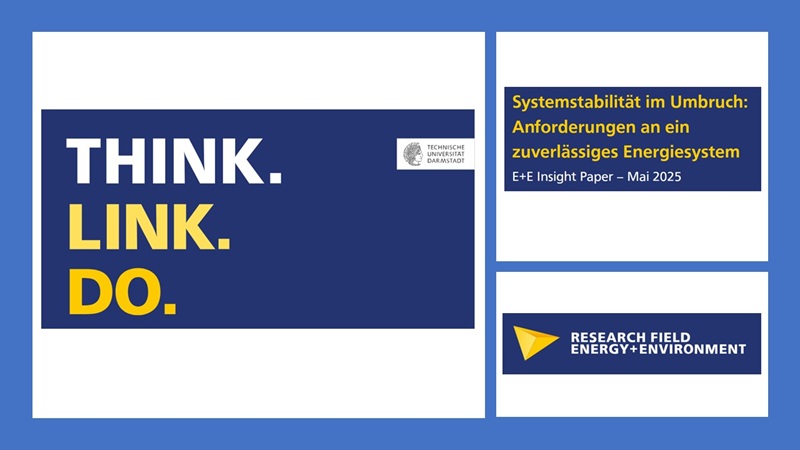New Insight Paper on “Requirements for a Reliable Energy System” (Prof. Knodt)
03.06.2025
The major power outage in Spain and Portugal in April 2025 has sparked intense debate – with some even questioning the entire trajectory of the energy transition. That’s why together with Gerd Griepentrog and Jutta Hanson – researchers from the Integrated Energy Systems profile topic at the Energy & Environment research field of Technische Universität Darmstadt – I took a closer look:
What does it really take to keep the power grid stable in a system based on renewable energy?
Curious what we found?
Check out our Insight Paper – grounded in engineering, yes, but written to be understood even without an electrical engineering degree I promise.
https://zenodo.org/records/15583350
In a hurry? Here are the key takeaways:
- With the decline of conventional power plants, key functions in the power grid are changing and can now be increasingly taken over by new technologies.
- Renewable energies feed into the grid via power electronic inverters, which react differently to grid events than rotating generators.
- With the increased decline in conventional power plants, the spinning reserve available in the grid is also decreasing. As a result, in the event of an imbalance, the frequency changes more quickly than in the past.
- This means that frequency deviations spread more quickly and more strongly in today's grid structure, increasing the need for targeted control and coordinated protection mechanisms.
- Renewable energy systems can contribute to grid stability if they are equipped with storage facilities or operated below their maximum power point. At the central level, large-scale storage facilities can provide spinning reserve power and control power flows in a targeted manner.
- Grid-forming converters are considered a key technology for the future. These are inverters that can take over classic power plant functions such as setting and stabilizing frequency and voltage.
- With the recent decision to procure spinning reserve on a market-based basis, the course has been set for system-friendly solutions—now it is important to implement them quickly in practice.
- Coordinated measures at the technological, economic, and political levels will ensure security of supply and grid stability in the future.
- Coordinated measures at the technological, economic, and political levels will ensure security of supply and grid stability in the future.


